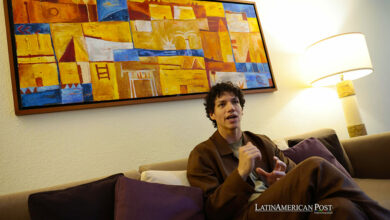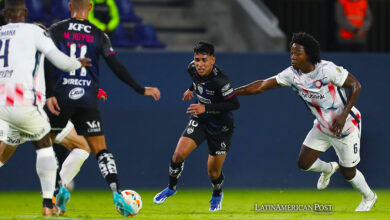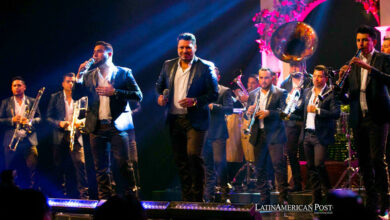4 must-see film festivals in Latin America
Get to know these Latin American events that bet on movies with cultural identity

Leer en español: 4 festivales de cine imperdibles en América Latina
The problems of Latin American cinema are diverse. The lack of distribution channels, movie theaters, and support for creative initiatives are just some of the ills that afflict the industry on this side of the world. For these and other reasons, the existence of film festivals in the region is so important. They are the ones that become points of confluence for all those involved in the sector, thus becoming creative crucibles. Here, there are 4 of the most outstanding film festivals:International Film Festival of Cartagena de Indias, FICCI (Colombia)
This is the oldest film festival in Latin America, as announced on its website. Held every year between the months of February and March by the Film Festival Corporation of Cartagena, the FICCI has been dedicated, since 1960, to provide spaces that alleviate the main difficulties of the national industry and the region. The festival aims to promote approaches between audiences and creators, open markets and promote and disseminate the latest in Ibero-American cinema.
Leja em português: 4 festivais de cinema imperdíveis na América Latina
The FICCI seeks to stimulate production by relating all the actors in the medium and encouraging the creation of audiences. In its version number 58, only within the framework of the competition, 66 films were exhibited under the criterion of promoting the cultural identity of their country of origin. The projected films were awarded in six categories:
- Official fiction
- Documentary officer
- Official Colombian cinema
- Official short film
- Gems and new creators
The festival also has alternative venues such as Cine en los Barrios, which seeks to promote the encounter between local communities, the cinema, and those who perform it. There are also initiatives such as Puerto Lab, which supports the first Ibero-American versions in post-production stage with incentives for its completion. The festival also has a space for discussion, conferences and networking in the name of Puerto FICCI. It also holds an award ceremony for the best of Colombian television: the India Catalina prize.
You may also be interested: These are the two women that were in charge of the International Film Festival of Cartagena
International Film Festival of Guadalajara, FICG (Mexico)
With 33 versions, the FICG is one of the strongest festivals in the region. Organized by the University of Guadalajara and the Board of Trustees of the Guadalajara Film Festival, it takes place in March of every year. The event has spaces such as a video library, business and market roundtables, through which Mexican and Latin American films are disseminated, promoted and distributed.
The FICG works as a space for professionals, critics and students to exchange and learn about the cinematographic industry. The official competition has six categories:
- The Mezcal Prize for premiere Mexican feature films
- Ibero-American Fiction Feature Film
- Iberoamerican Documentary
- Iberoamerican Short Film
- The Rigo Mora Award for Mexican animated short film
- The Maguey Award for Queer Cinema / LGBTTTI
According to the festival's website, one of its priorities has been "to contribute to the professionalization of the film industry in Mexico and Latin America”, so it created a platform to instruct young creators, giving them the opportunity to dialogue, learn, collaborate and discuss ideas, concepts and methods with recognized characters of international cinema.
Within the framework of activities for training, the FICG has initiatives such as the DocuLab Guadalajara, an incentive to finalize documentary projects in postproduction, and the Talents Guadalajara, an "intensive encounter of advanced film development activities". The latter also has a component aimed at those who wish to train in film criticism. This is done in collaboration with the Berlinale Talents and the Goethe-Institut Mexico, supported by the Film School of San Antonio de los Baños EICTV and the FIPRESCI International Federation of Cinematographic Press.
Gramado Film Festival (Brazil)
This Brazilian festival has already forty-five years of experience. Held every year during the month of August in the Brazilian city of Gramado, since 2014 the Gramadotur, municipal autarky of Tourism and Culture of the city of Gramado has been responsible for it. Its story could, according to its website, be divided IGNORE INTO three stages:
- The first in the decade of the seventies, marked by the appearance of national stars in search of fame
- The second in the eighties that gave way to an acculturation of the spaces and discussions that took place there
- The third during the nineties, when it finally became international, giving way to an Ibero-American edition, and marking the way to what it is now: "a stage for debates and important meetings between artists, filmmakers, students, film researchers, press and public in general ", as described on the festival page.
The festival awards selected films in four major blocks:
- Brazilian feature films
- Foreign feature films
- Short films
- Gaucho cinema sample. The latter is dedicated to the exhibition of works that promote the cultural identity of the gaucho zone, located in the south of Brazil, territory where the city of Gramado is located.
The festival, in addition to presenting the Kikito de Oro award, an image created for the festival by the famous Brazilian artist Elisabeth Rosendfeld, also pays homage to actors and actresses representative of the local industry with the award named Oscarito; to the great Brazilian directors and filmmakers with the Eduardo Abelin prize; to the great exponents of Latin American cinema through the Crystal Kikito; and to those who have contributed to the growth of the contest with the Ciudad de Gramado prize.
Film Festival of Mar del Plata (Argentina)
This contest has the endorsement of FIAPF as the only Latin American festival "category A", recognition that hold festivals such as Cannes, Berlin, Venice, and San Sebastian. Held every year during the month of November, it has 32 versions in its repertoire and seeks to be a reflection of Argentine and world cinema, helping the development and exchange of the industry.
President Perón envisioned it as a space that would bet on the culture of the national cinema of the southern country, fostering, and promoting it. The festival, organized by the National Institute of Cinema and Audiovisual Arts (INCAA), exhibits diverse films in origins, styles and themes, as related to its web portal.
The Festival is divided IGNORE INTO four major sections:
- Competitive Section: composed of the International Competition, the Latin American Competition of Short and Feature Films, the Argentine Competition of Short and Feature Films, and Work In Progress (Incentive for works in completion of works in process)
- Panorama: a sample of the best of the year worldwide
- Review: that revives the work of forgotten directors and their heritage
- Special Activities: section that gathers all the academic work around the industry. This allows interaction between the public and the creators: talks, round tables, book presentations, screenings and seminars are part of the program.
The festival also has an itinerant version that takes movies to the most relegated places in Argentine geography. The festival honors the Astor Piazzola awards for best film, best director, best actress, best actor, best script, best Ibero-American film and the special jury prize; besides the Ernesto Che Guevara Award for the best Latin American film.
Latin American Post | Isabel Pradilla S
Translated from “ 4 festivales de cine imperdibles en América Latina”





